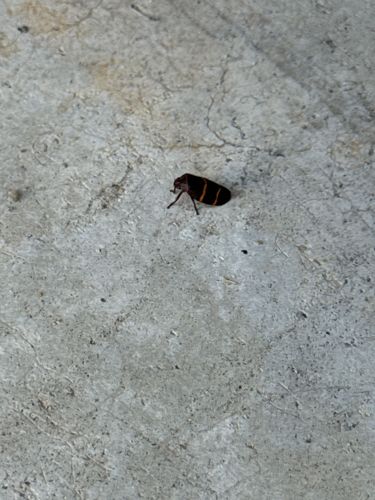Two-lined Spittlebug
Scientific Name: Prosapia bicincta (Say)
Order & Family: Order: Hemiptera, Family: Cercopidae (Spittlebugs)
Size: Adults typically range from 6 to 10 mm (approximately 0.24 to 0.39 inches) in length.

Natural Habitat
Found in various grassy areas, meadows, lawns, pastures, and natural areas where their host plants grow. They prefer moist environments.
Diet & Feeding
They are plant feeders, using their piercing-sucking mouthparts to extract sap from a variety of host plants. The two-lined spittlebug specifically feeds on grasses and herbaceous plants, including turfgrasses, wildflowers, and some ornamental plants.
Behavior Patterns
Cercopids are known for their nymphs producing a frothy, spittle-like substance (often called "spittlebug foam" or "cuckoo spit") for protection against predators and desiccation. Adults are agile and can hop or fly to escape threats. They are active during the day.
Risks & Benefits
Potential Risks: Can be considered a pest in lawns and pastures, especially in warmer climates, as their feeding can stress plants, leading to wilting, yellowing, and growth reduction. In severe infestations, large areas of turfgrass can be damaged or killed. Potential Benefits: Generally not significant beneficial insects, though they are a part of the natural food chain for some predators. They contribute to the biodiversity of grassland ecosystems.
Identified on: 8/26/2025